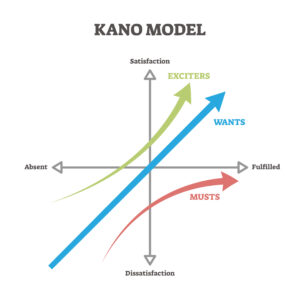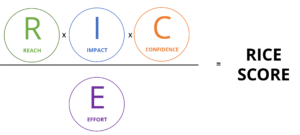Agile Games
Help Rank Business Value with Your Customers using Agile Games
The Agile Software Development process and the use of small releases is valuable partly because it helps generate a ton of great ideas quickly. But as developer teams know, not all great ideas work out well in practice. Sometimes, the idea turns out to have fundamental flaws. Other times, the team discovers the time just wasn’t right for that particular feature.
According to research, roughly one in four apps suffer abandonment after just one use. This highlights why it’s critical for teams to direct their energies profitably and ship features that hit their target. But making the right product bet can be difficult, especially when there’s little direction from the customer or product owner.
Agile games were developed to help teams that find themselves in this bind. With these games, teams can accurately assess competing features and prioritize those tasks that produce higher business value. In this post, our consultants explain what Agile games do, why they are necessary, and the various types that teams can explore to aid their work.
What are Agile Games and why are they necessary?
Agile games, also called product feature prioritization models, help teams assess, rank, and prioritize product features. They’re called games because they include many models that gamify the process of prioritizing competing features. But whatever you choose to call them, their focus is simple: to help the team satisfy itself that they are swimming in the right direction.
Because of the short iterative periods that are the lifeblood of Agile, teams will find themselves always moving from feature to feature. Amidst all this speed, it can be easy to lose direction and confuse motion for progress. Agile games provide a reality check so teams can ascertain that they are working on tasks that have real business value that will resonate with their intended audience. Agile games are necessary to prioritize features/products according to business value in two main circumstances.
First, the general practice in Agile methods like Scrum and XP is to involve the customer as much as possible. This means taking the customer’s direction as to task priority, requirements, and features. However, not all organizations have established structures that help determine feature ranking and potential reception by their market. These games help prioritize features so teams can identify which products to focus on next and the right moment to ship the desired feature.
While Agile methods like Scrum, Kanban, and Extreme Programming (XP) help teams work faster and produce high quality features, teams may still operate within an organizational structure that limits them. For instance, what happens when the team is well-steeped in Scrum but the organization they work for isn’t sure of what features to ship next or what products it should prioritize? This can often be the case with customers that are new to the Agile process or who have a plan-based rather than value-based approach to software development.
A plan-based development approach is typically theory-focused as opposed to a practical assessment of what the organization needs, where the product needs to go, and what the customers expect. Conversely, a value-based approach ranks proposed projects according to their relative worth across various factors and then prioritizes accordingly. A value-based approach is in line with the core values of Agile Software Development, which includes delivering the most quality within the least time possible and adjusting goals, tasks, and outcomes in line with changing information.
When the customer is uncertain as to where focus should turn next, teams (via the Product Owner in Scrum, for instance) can step in with Agile games to rank business value.
Second, the team may be conflicted within itself on what features to ship next. Agile games help the team prioritize the various available product routes and come to a consensus on what direction the team should face next. Since agile teams are cross-functional and self-organizing, these problems come up more often than most assume, especially when there’s no clear leadership from the customer or Product Owner in this regard.
Agile games not only help teams orient themselves in the right direction, they can also be great for team bonding and development.
Types of Agile Games for business value ranking
1. Monopoly Money
This model is also called “buy a feature”. Customers or stakeholders (leaders of departments such as VPs, SVPs, etc.) participate in the game by spending money on features they believe are worth it.
on features they believe are worth it.
In the game, the lead (often the product owner) lists all the competing features and gets the participants (usually no more than eight) to assign a “price” to each feature. The price is based on the relative cost to develop the feature and the benefits it stands to bring to the business.
Participants then spend their money on those features they believe strongly about. While some will place their bets on particular features, others might spread their money around. At the end of the game, the product features that get bought the most make the top of your priority list.
2. MoSCoW Prioritization
This model helps teams prioritize features on a sliding scale of what they believe end-users would prefer. Interestingly, the name has nothing to do with the Russian capital. Instead, it’s an abbreviation of the following:
- Must Have – features that simply must make it into the final product e.g. login and customer support
- Should Have – features treated as important but not urgent or non-negotiable
- Could Have – features that don’t have a time-sensitive schedule but could be great for UX
- Won’t Have – features that stakeholders either don’t want or that could wait till another day
By placing each competing feature into one of these categories, teams can rapidly sort through the mess and focus on those tasks that need doing now. MoSCoW prioritization can be an excellent way to reduce noise at the start by isolating important or time-sensitive tasks. The team can then prioritize which tasks to start first with other more precise Agile games.
3. 100-Point Test
The 100-point test is also called the 100-dollar test or Cumulative Voting. It is an effective prioritization strategy that forces participants to critically assess the merits of each competing feature by giving them limited resources to choose.
Here, participants receive a figurative 100-dollar bill or simply get 100 points. They get to spend those points on the list of features being considered but they must decide how much of their money to allocate to each feature. The game is over for them once their 100 dollars is spent. At the end of the game, the moderator collates the results and whatever features received the most points are those that top the priority list.
While there are obvious pitfalls, such as the danger of groupthink and peer-motivated voting, these can be countered by picking participants that are as diverse and independent as possible.
4. Kano analysis
The Kano model, created by Japanese researcher Noriaki Kano, is one of the more popular prioritization techniques on this list. The model ranks and prioritizes tasks on  a horizontal axis that represents implementation values and a horizontal axis that reflects customer satisfaction. In between these axis, the model classifies features into four categories:
a horizontal axis that represents implementation values and a horizontal axis that reflects customer satisfaction. In between these axis, the model classifies features into four categories:
- Essential features, also referred to as must-haves that the average user will require
- Performance features, or those features that elevate user experience and excitement
- Delightful features, are the secret sauce features that surprise and delight users
- Indifferent features, or those that do not affect customers by their presence or absence
Per this game, the team will develop a survey with questions that collect user sentiments about each of the competing features and how they rank on this scale. The responses collected in the survey will be used to plot a visual representation of the Kano Model, creating a clear picture of what needs to be prioritized.
After the team plots the graph, a common approach is to include 80% essential features, 20% exciters, and the other delighter (where possible) in the shipped release.
5. Dot voting
Dot voting is similar to the 100-point test, given that participants have a limited number of resources with which to make their choice. The product owner moderates the game with various customer stakeholders as participants.
The competing features are described here as user stories which the product owner affixes on a white board using sticky notes. Each participant then gets a limited number of sticker dots (usually 5-6) that they can then spend in voting for their desired feature. At the end of voting, the product owner will order the product backlog from most-voted tasks to the least-voted.
Some experts advocate giving the voting a second pass as participants likely will not be completely happy with the vote. A second voting round gives everyone an opportunity to reassess their position by discussing the stories first or discriminate between stories in a high-priority grouping to determine which should go first.
After the discussion, participants should emerge with clearer reasons why they made their choice in the first place and what they would change, given the option of a second pass.
6. Opportunity Scoring
Opportunity scoring uses gap analysis to predict customer interest in certain features. The model assumes that customers only use products to meet specific needs. It then measures and ranks each competing feature in terms of the need it fulfils and compares this to how well the customer feels that need is currently met.
Opportunity scoring takes place on a Satisfaction and Importance chart. The team takes customer responses using a survey where they ask questions about how important they think a feature is and how satisfied they are with existing solutions.
The features the team wants are those that customers feel yet lack satisfaction.
7. RICE Matrix
RICE stands for Reach, Impact, Confidence, and Effort. This model assesses each feature based on these four factors.
- Reach means the number of people (average monthly or quarterly users) that use the part of the product that each feature relates to
- Impact refers to how much the assessed feature contributes to the final product
- Confidence is how much belief the team has in the feature’s impact without necessarily possessing the data to confirm this
- Effort is how much time it would likely take to develop the feature to the planned level
After applying each of these factors to the competing features, the team assigns a score, say from 1-10, based on each factor. The following formula will apply to calculate the overall performance of the features in relation to these factors and assign a rice score:
The resulting score measures “total impact per time worked” – exactly what development teams like to maximize. It forces you to think about why a project idea will have impact, and to be honest about the effort that’s needed to achieve it.
8. Priority Poker
Priority pokers uses an actual card deck to assess and rank features in a calculative manner. Participants prioritize those big-ticket features they believe will move the needle in their target market and then place a bet on that feature uses special poker cards.
The game works by gathering all the project stakeholders and having them vote for competing features. The product owner or project manager moderates the game in the position of a dealer. Only, in this game, everybody receives cards of the same amounts that they bet on specific features they rank favorably. The twist is the bets are placed face down so no one can tell what their neighbor bets.
At the end of the game, players turn their cards face up and the scores are collated. The highest-scoring features make it to the top of the priority list.
Let i3solutions help you win the game
Each of these games is designed to facilitate team decision making regarding components and features. This is the key to how we help organizations move towards more Agile mindset. For over 25 years i3solutions has been adapting our Agile methodologies to deliver the highest possible business value by focusing on client needs and continuous improvement. Contact us today if you need a seasoned coach to run your Agile games and help prioritize your development efforts.
Leave a Comment



